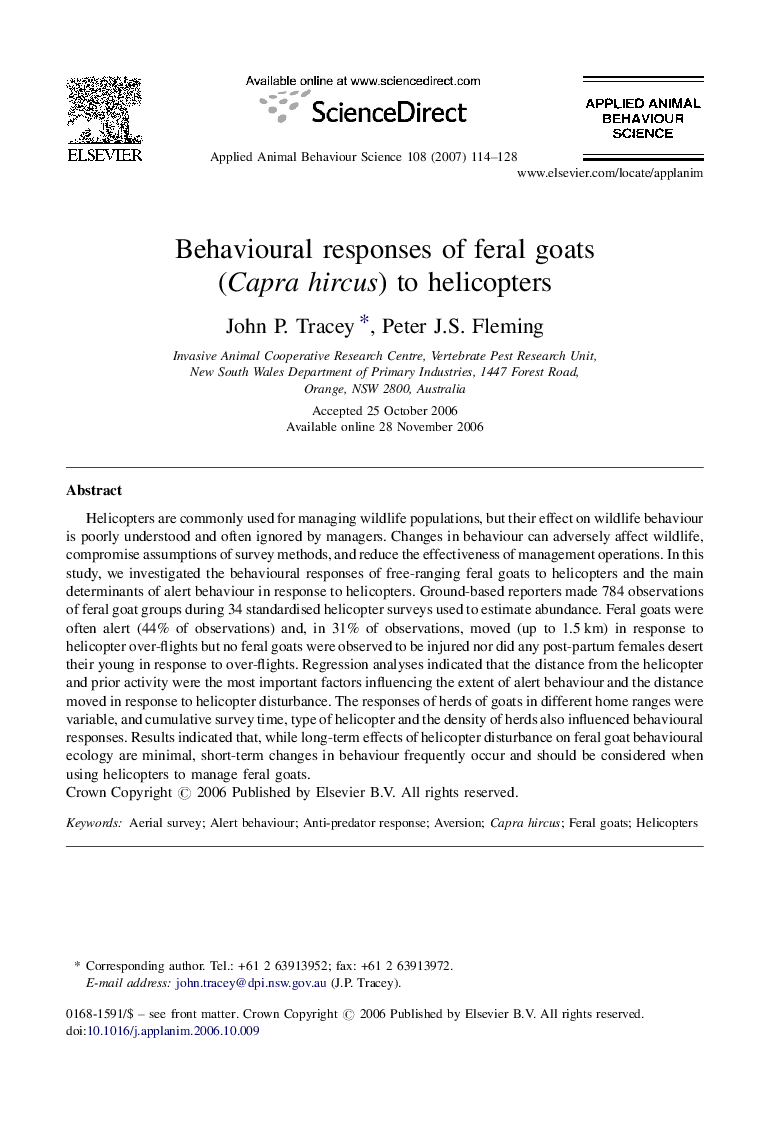| Article ID | Journal | Published Year | Pages | File Type |
|---|---|---|---|---|
| 6379797 | Applied Animal Behaviour Science | 2007 | 15 Pages |
Abstract
Helicopters are commonly used for managing wildlife populations, but their effect on wildlife behaviour is poorly understood and often ignored by managers. Changes in behaviour can adversely affect wildlife, compromise assumptions of survey methods, and reduce the effectiveness of management operations. In this study, we investigated the behavioural responses of free-ranging feral goats to helicopters and the main determinants of alert behaviour in response to helicopters. Ground-based reporters made 784 observations of feral goat groups during 34 standardised helicopter surveys used to estimate abundance. Feral goats were often alert (44% of observations) and, in 31% of observations, moved (up to 1.5Â km) in response to helicopter over-flights but no feral goats were observed to be injured nor did any post-partum females desert their young in response to over-flights. Regression analyses indicated that the distance from the helicopter and prior activity were the most important factors influencing the extent of alert behaviour and the distance moved in response to helicopter disturbance. The responses of herds of goats in different home ranges were variable, and cumulative survey time, type of helicopter and the density of herds also influenced behavioural responses. Results indicated that, while long-term effects of helicopter disturbance on feral goat behavioural ecology are minimal, short-term changes in behaviour frequently occur and should be considered when using helicopters to manage feral goats.
Related Topics
Life Sciences
Agricultural and Biological Sciences
Animal Science and Zoology
Authors
John P. Tracey, Peter J.S. Fleming,
